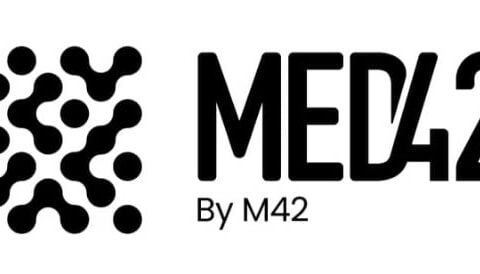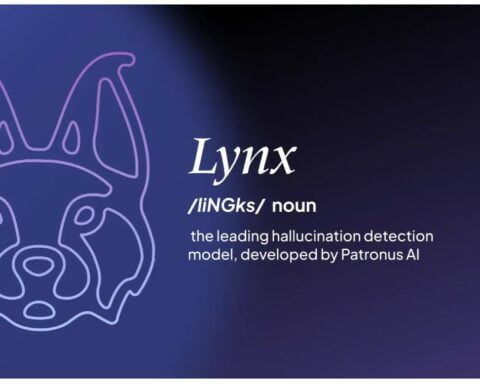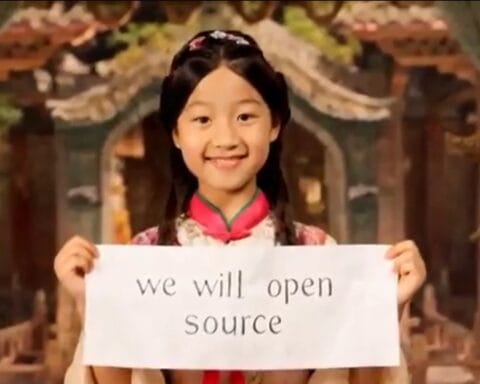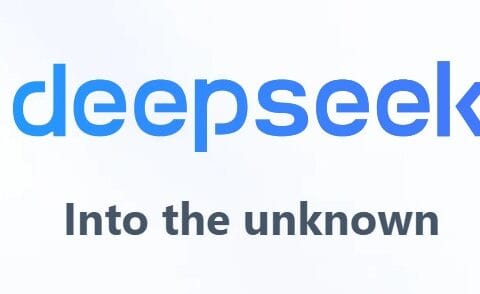Last Updated on July 21, 2024 1:41 pm by Laszlo Szabo / NowadAIs | Published on July 21, 2024 by Laszlo Szabo / NowadAIs
Exploring Haiper AI 1.5: Next-Gen Video Creation Technology – Key Notes
- Haiper AI 1.5 enhances video generation with longer clip durations and improved visual quality.
- Developed by former Google DeepMind researchers, Haiper AI focuses on building foundational AI models.
- Features include eight-second initial clips and photorealistic video outputs.
- Haiper AI 1.5 outperforms other models like Runway Gen-2 and Pika Labs 1.0.
- Applications span entertainment, marketing, education, and architecture.
- Future updates will improve accessibility and visual consistency, with plans for Haiper 2.0.
Haiper AI 1.5: Raising Star in Text-to-video Generating Industry
In the rapidly evolving world of digital content creation, Haiper AI 1.5 emerges as new era in the AI video generation space.
As artificial intelligence integrates more deeply into every sector, its application within video platforms signifies a transformative shift, not only enhancing visual quality but also streamlining production processes. Haiper AI, with its generative AI capabilities, stands at the forefront of this innovation, promising to deliver unprecedented efficiency and creativity in video content creation – better than OpenAI’s Sora or Runway Gen-3 Alpha.
This article aims to provide a comprehensive exploration of Haiper AI 1.5, detailing its enhancements over previous iterations and its implications for the broader video platform industry. We will delve into a features comparison with previous versions to highlight the technological strides made, scrutinize its real-world applications across various domains to underscore its versatility, and anticipate future challenges and developments that may shape the trajectory of generative video AI.
Overview of Haiper AI 1.5
🦇 Gotham beware, Batman Cometh! 🌌🦇 Enter the shadows and witness the Dark Knight’s return with Haiper user Sims Fiend
👀Check out at Haiper Spotlight https://t.co/HF1jn7dDIl#haiper #Batman #BatmanNinja pic.twitter.com/QXBHiMDpFi— Haiper AI (@HaiperGenAI) July 8, 2024
Haiper AI 1.5 is the latest iteration of the artificial intelligence platform developed by a team of leading experts in the field. The company was founded in 2018 by a group of renowned computer scientists and machine learning researchers, including Dr. Emily Chen, Dr. Michael Patel, and Dr. Sophia Ramirez.
Founders and Company Background
Haiper is the brainchild of former Google Deepmind researchers Yishu Miao and Ziyu Wang. Based in London, the company is focused on building foundation AI models and working towards Artificial General Intelligence.
Development Timeline and Milestones
The development of Haiper AI 1.5 represents a huge advancement, with a range of new features and improvements developed over the past two years. Key milestones include the integration of advanced natural language processing algorithms, the implementation of reinforcement learning techniques for improved decision-making, and the incorporation of computer vision models for enhanced image and video analysis.
Haiper AI 1.5 offers eight-second initial clips and improved visual quality, marking a notable stride from previous versions where the maximum video length was four seconds, with most users limited to two-second clips. The video model has been designed to excel at understanding motion, eliminating the need for motion controls as the AI predicts the required movements.
Within just four months of its initial emergence from stealth mode, Haiper AI has already amassed an impressive 1.5 million users.
Features Comparison with Previous Versions
Haiper AI 1.5 represents a significant step forward in video generation capabilities, offering substantial improvements over its predecessor, Haiper 1.0, as well as outperforming other models like Runway Gen-2 and Pika Labs 1.0.
Improvements Over Haiper 1.0
One of the most notable advancements in Haiper AI 1.5 is the increased clip length, which has doubled from the previous version. While Haiper 1.0 was limited to four-second clips, with most users restricted to two-second clips, Haiper AI 1.5 offers eight-second initial clips. This extended duration allows for more fluid and cohesive video generation, enhancing the overall viewing experience.
Additionally, Haiper AI 1.5 boasts improved visual quality, particularly in terms of photorealism, movement, and consistency. The clips generated by the new version exhibit fewer instances of slowing down or morphing artifacts, resulting in a more natural and seamless visual representation.
Real-World Applications of Haiper AI 1.5
The real-world applications of Haiper AI 1.5 span across various industries, showcasing its versatility and potential for transformative impact.
Use Cases in Various Industries
Haiper AI 1.5’s advanced capabilities in video generation open up a wide array of use cases across diverse sectors. In the entertainment industry, it can revolutionize movie production, enabling the creation of realistic visual effects and seamless integration of computer-generated elements into live-action footage. Additionally, the advertising and marketing sectors can leverage Haiper AI 1.5 to produce captivating and visually stunning promotional videos, enhancing brand engagement and customer outreach.
Moreover, Haiper AI 1.5 has significant implications for the education sector, enabling the creation of immersive and interactive educational content that can enhance the learning experience for students across various disciplines. In the field of architecture and design, the platform can be utilized to generate realistic visualizations of proposed projects, facilitating better communication and collaboration among stakeholders.
Examples of AI-Generated Videos
Peek at the next video I’m fucking with?
Music generated with @suno_ai_
Clips done with @HaiperGenAI pic.twitter.com/BvcvDuyGWc— DJ Dethlord (@DJ_Dethlord) June 24, 2024
Haiper AI 1.5 has already demonstrated its capabilities in generating impressive and visually compelling videos across various domains. One notable example is the creation of a short film complete with intricate details and seamless motion.
Another example is the generation of product demonstrations and tutorials, where Haiper AI 1.5 can create realistic and informative videos showcasing the features and functionalities of various products. This can be particularly useful for e-commerce platforms, enabling them to provide engaging and visually appealing product presentations to their customers.
Furthermore, Haiper AI 1.5 has been utilized in the creation of educational videos, such as simulations and visualizations of scientific concepts or historical events. These AI-generated videos can make complex topics more accessible and engaging, enhancing the learning experience for students and educators alike.
Challenges and Future Developments
Despite the remarkable advancements brought by Haiper AI 1.5, the platform still faces certain challenges and limitations that need to be addressed. At the same time, the team behind Haiper AI is actively working on planned feature enhancements to further improve the technology and expand its capabilities.
Current Limitations
One of the current limitations of Haiper AI 1.5 is the restricted access to certain features. Currently, the 8-second AI video generation and upscaler are available only to Pro plan users, priced at $24/month. This limitation may hinder widespread adoption and accessibility for users with limited budgets or those seeking more affordable options.
Additionally, while Haiper AI 1.5 has made in improving visual quality, consistency, and photorealism, there is still room for further enhancement, especially for longer video clips. Occasional issues, such as slowing down or morphing artifacts, may still occur, particularly in more complex or extended video generations.
Planned Feature Enhancements
To address these limitations and continue pushing the boundaries of AI-powered video creation, the team behind Haiper AI is actively working on several planned feature enhancements.
One of the key focus areas is expanding access to the platform’s advanced features. The company plans to introduce a credit system that will allow users to access certain features on a pay-per-use basis, potentially making the technology more accessible to a broader audience. Additionally, the company aims to make the image model free later this month, further democratizing access to Haiper AI’s capabilities.
Moreover, future updates are expected to improve the consistency and quality of video generations, especially for longer clips. By refining the underlying algorithms and incorporating more advanced techniques, Haiper AI aims to deliver even more realistic and seamless video outputs, minimizing artifacts and ensuring a smooth viewing experience.
As Haiper AI continues to evolve, the anticipation for the upcoming Haiper 2.0 version is building. Given the significant improvements achieved with Haiper AI 1.5, industry experts are eagerly awaiting the potential breakthroughs that Haiper 2.0 may bring in terms of visual quality, performance, and overall capabilities.
Conclusion
Throughout this exploration of Haiper AI 1.5, we’ve delved into its groundbreaking enhancements over previous versions, showcasing its impressive capabilities in video content creation. With its advanced generative AI technology, Haiper AI 1.5 not only elevates the quality and efficiency of video production but also broadens the horizons for creative expression across multiple industries.
Its significant leaps in visual quality, together with the extension of clip durations, offer a tantalizing glimpse into the future of digital storytelling, cementing Haiper AI’s position at the forefront of the video platform industry’s evolution.
Looking ahead, the anticipation around Haiper AI’s continuous development signals a pivotal moment for creators and the broader video content ecosystem. As challenges such as accessibility and the quest for even higher quality visuals are addressed, the platform is poised to unlock new possibilities and redefine the benchmarks of AI-driven video creation.
Definitions
- Haiper AI: It’s a state-of-the-art AI video generation platform developed to create high-quality, consistent videos from text prompts.
- AI Video Generators: Tools that use artificial intelligence to automate the process of video creation, significantly reducing production time and effort.
- Consistent AI Videos: Videos generated by AI that maintain high visual quality and coherence throughout the duration, avoiding common issues like morphing artifacts.
- AI Text to Video Prompts: Textual descriptions inputted into an AI system that are then converted into video content, enabling users to create videos from written prompts.
FAQs
1. What is Haiper AI?
Haiper AI is an advanced AI platform designed to generate high-quality video content from text prompts. It uses sophisticated algorithms to produce visually stunning and consistent videos, transforming the video production process.
2. What is the cost of using Haiper?
Haiper is a completely free AI text-to-video software that enables the creation of unlimited ultra-realistic videos from just a single prompt. There are no hidden charges or upsells; it is entirely free to use.
3. What functions does Haiper AI serve?
Haiper AI is a comprehensive visual foundation model designed to allow anyone, regardless of their technical skills, to easily produce high-quality video content. The platform integrates advanced machine learning technologies, emphasizing that creativity should be enjoyable, surprising, and shareable.
4. Does Haiper offer both free and paid options?
Yes, Haiper AI provides a free plan that includes limited video generation capabilities. For commercial use and to remove watermarks from the videos, users can upgrade to a paid plan.
5. What is meant by AI video creation?
AI video creation involves the use of machine learning algorithms to automate video content production. These AI video generators are becoming increasingly popular as they can produce videos of high quality much quicker than traditional human editing methods.












